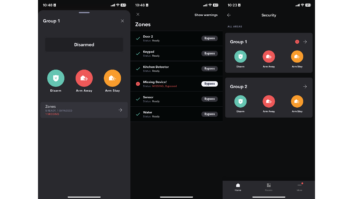Why should you learn how to implement a switch in your residential install? It is all about management and control, which is exactly what we do.

ThinkStock
In the simplest of terms, the home integration industry started out as a way to access the controls of several items at once from the comfort of a couch. From the humble origins of the Zenith Space Command remote control to multi-touch, infinite-paged touchscreens, the quest has been to consolidate the management and control of our devices and systems.
Ethernet, via a Cat-6 or greater cable, has mostly become the de rigueur transport for all things integration. All too often, though, we are used to seeing a network as “all things connected,” ready to communicate at any point. In the audio-visual world, we have concerns about any device in the middle — signal loss from that pesky HDCP key count, losses of dB from interconnects. The simplest direct line of connection is usually the best. Installs with a simple setup of devices to a router connecting to endpoint hosts, however, are putting themselves at a disadvantage.
Ethernet has at its core the methods to control and manage data. In truth, without these checks and balances, every network would be a chaotic car wreck. We have all seen networks where devices drop off and re-appear in a seemingly random manner, where AV content runs fine for days then does nothing but stutter.
Conductors of the Conduit
The TCP of TCP/IP stands for Transport Control protocol. TCP, in the simplest terms, insures that data gets to where it is intended. A network is about distribution of a source to destination(s), but does every destination need to see the source? In a typical home install, there is a router, which take the data and forwards it on to connected devices. While routers do have some Layer 3 management, the effect on overall traffic is limited. The result is a network that is a little less like “drinking from a fire hose.”
Think about the network like transportation on train tracks. Just how do they get all of those trains heading for multiple destinations over a single set of rails? It’s a result of switches that segment parts of the line to insure that specific trains get to their destination.
A home network often has devices looking for email, streaming internet sources, HD/4K video from local devices, VoIP, and more. Here is where the switch excels — a midpoint that “speeds up” signal delivery. Just like the train line example, not all of the network devices need to see all data. Switches allow us to segment and even micro segment the network to maximize the efficiency of each.
Switches can be unmanaged or managed. In short, unmanaged switches are “plug and play.” Putting these units inline allows multiple connections with a minimum of auto management. These switches are often better than nothing, but considering the small price differential, going with an enterprise-class managed switch is worth a few more bucks.
Mainlining Your Data
Managed switches allow us to really maximize the network, delivering the content when and where we want/need it. How does it do this? Virtual Large Area Networks (VLANs) allow the grouping of switch ports into logical LANs. With a VLAN, a single switch can separate the home office from the media room and the kids’ network needs. This OSI Level 2 grouping of devices need not be physically adjacent ports; it is simply an assignment of which devices/computers talk to one another. The process is extremely flexible, as ports can be added or removed as needed to accommodate shifting needs. Have a home theater and want to add a media/game room? Just associate the ports.
VLANs also include Maximum Transmission Units (MTUs), which is managing the maximum size of each IP packet in any transmission. This is handy in making the segment(s) adjust to data streams, and generally is automatic but also can be manually set.
Quality of Service (QoS) allows the network to set priorities on the data types that are buffered or sent on first.
Data is sent over the network via TCP, mentioned earlier, and UDP. TCP utilizes redundancy, receipt confirmation, and checksums to verify that the data is delivered and re-assembled in the proper order. This all takes time, which is not noticeable with email or cloud document creation but can be a death knell to streaming video and VOiP.
Streaming data is sent over UDP (User Datagram Protocol), which plays a bit loose with packet sizes and simply sends the data. We do not want our video to stutter, pause, or have digital jitter audio. Constantly checking via TCP would make such content delivery impractical.
It is not just audio and video that can challenge network performance. The implementation of IoT, sensors, surveillance, and environmental information needs priority over “standard” network data. QoS categorizes these streams and allows you to set the priority of delivery and to which (physical) ports these are delivered.
We learned in science and math class that the shortest path between two points is a straight line. With an unmanaged switch, we are often limited by the Spanning Tree Protocol (STP), which is intended to insure that there are no multiple links that could cause loops and take down a network. One assured path is a safety feature, but it limits possible alternative routes, potentially bogging things down.
Managed switches have the ability to utilize mesh network processes, guiding traffic along the shortest path to its intended destination. Shortest Path Bridging takes over for the STP, providing a managed method for multiple connections and insuring that loops are minimized and maximizing data throughput.
Sometimes, managing the data is not nearly enough, and we need more than one pipe to get the job done. Link aggregation allows the linking of several individual ports together so that they act as one. By sending data packets down different links and balancing the traffic across member links, you increase available bandwidth between the two. The process is limited but very useful in situations where devices put high demands on the network.
What needs more management than powering our devices? Power Over Ethernet (POE) has come into it’s own recently with the rise of IoT-like devices. POE-enabled switches help to eliminate the need for in-wall power sources or the dreaded wall wart exiting the wall to plug in. In addition, room opens up in the rack once we no longer need to accommodate these space wasters.
Like I said, network switches are all about management and control, which is exactly what we do.







